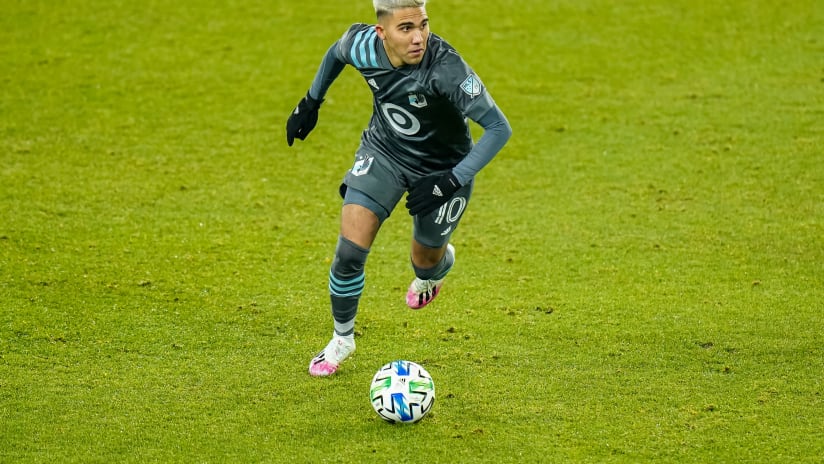Certain elements of a player’s qualities are easy to perceive. How well do they strike the ball? Do they have the body control to fend of attackers? Or, conversely, can they challenge an opposing player without fouling? How fast are they, both with and without the ball?
Then there are qualities that are a bit harder to assess directly but are no less important. How well do they read the game? Can they be as dangerous without the ball as they are with it? Do they communicate clearly and directly with teammates?
But then there are questions that depend on so many different variables that even the best answers are only guesses. This is the territory of the slippery and elusive “Do they make the players around them better?” Since joining Minnesota United in early September, the answer for Emanuel Reynoso has been — finally and resoundingly for a team that has struggled to find a true difference maker on the pitch — yes.
More than many sports, soccer is about space and its dynamic apportionment. This is due to the size of the playing surface and the fluid and nearly non-stop nature of the game. Space is opening up and closing down constantly because to the movement of the players and the movement of the ball. Up until this season, MNUFC have not had a genuine space creator in the attack. At their best and at different times of the last few years, Kevin Molino and Darwin Quintero filled that role but neither had enough around them to make it work on their own. Molino’s injuries had made it hard for him to achieve consistency and while Quintero could often draw two or three defenders, he struggled at times with holding onto the ball and finding teammates.
The first thing that sets Reynoso apart comes from those aforementioned second-order qualities. As he’s grown familiar with the team and how Head Coach Adrian Heath wants them to play, his sense of where to be on the pitch to make the maximum impact has been unerring. He couples that awareness of where he is without the ball with a strong sense of where everyone around him is. When he drops back and puts himself in a dangerous position to receive the ball near the midfield line, he frequently simply taps it square to Jan Gregus or Osvaldo Alonso without even looking at them.
And when he keeps possession, he does two incredibly important things: he makes the first defender miss and he immediately looks to advance the ball. The first of those things obviously has to do with his physical skill set and tight handle but the second has a lot more to do with an approach that consistently values keeping the opponent on the back foot, that recognizes an unsettled defense is just easier to attack than a set one.
When you put all of that together, you get a sort of force multiplier. Instead of Reynoso just adding to the team when he’s out there, his work rate in the attack has a multiplicative effect on the players around him. Molino, for example, has always been more dangerous as a creator on the ball and more dangerous as a scorer off the ball, but it’s been difficult for him to fulfill both those roles to the utmost in a traditional number 10 role. Reynoso has unlocked both of those parts in ways we haven’t seen yet because he can put himself in a position to receive the opportunities Molino creates and then find him again as he runs off the ball.
Reynoso has, of course, elite skill when it comes to weighting his passes and deceiving defenders. But those beautiful bursts of creativity are built on a foundation of consistently doing the little things out there and not at the expense of them. That commitment is what opens things up for his teammates. It lets the game slow down or speed up and allows the Loons to take the game to their opponent, rather than reacting to it.





